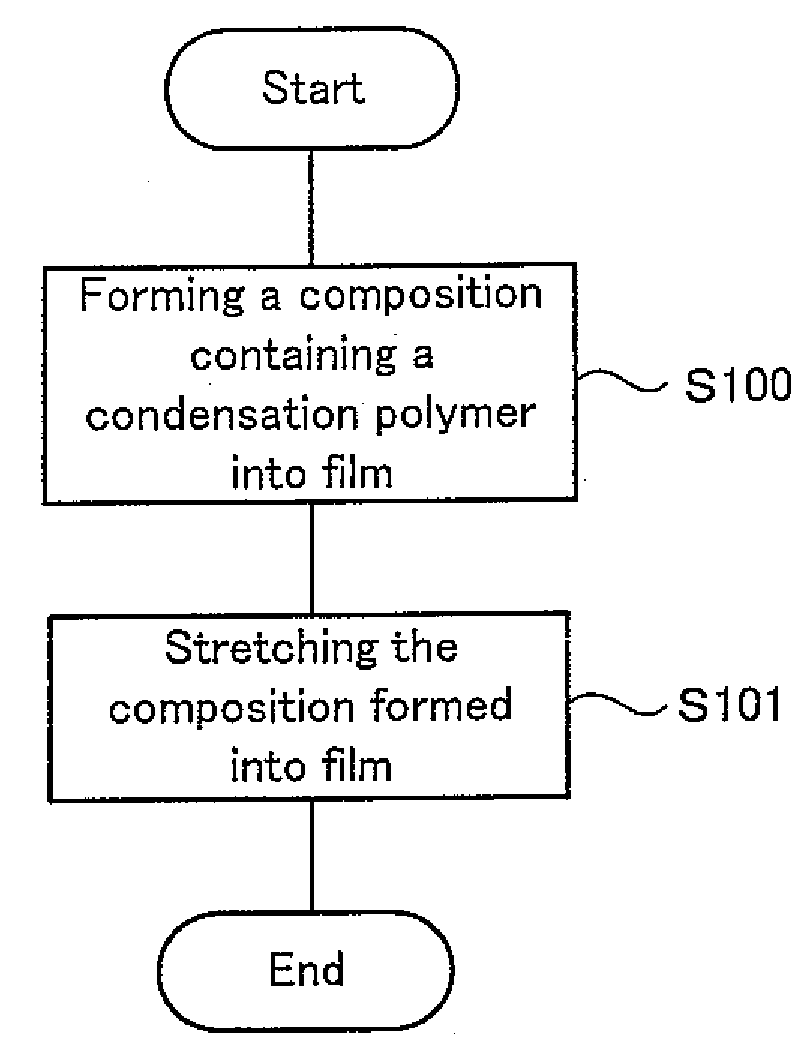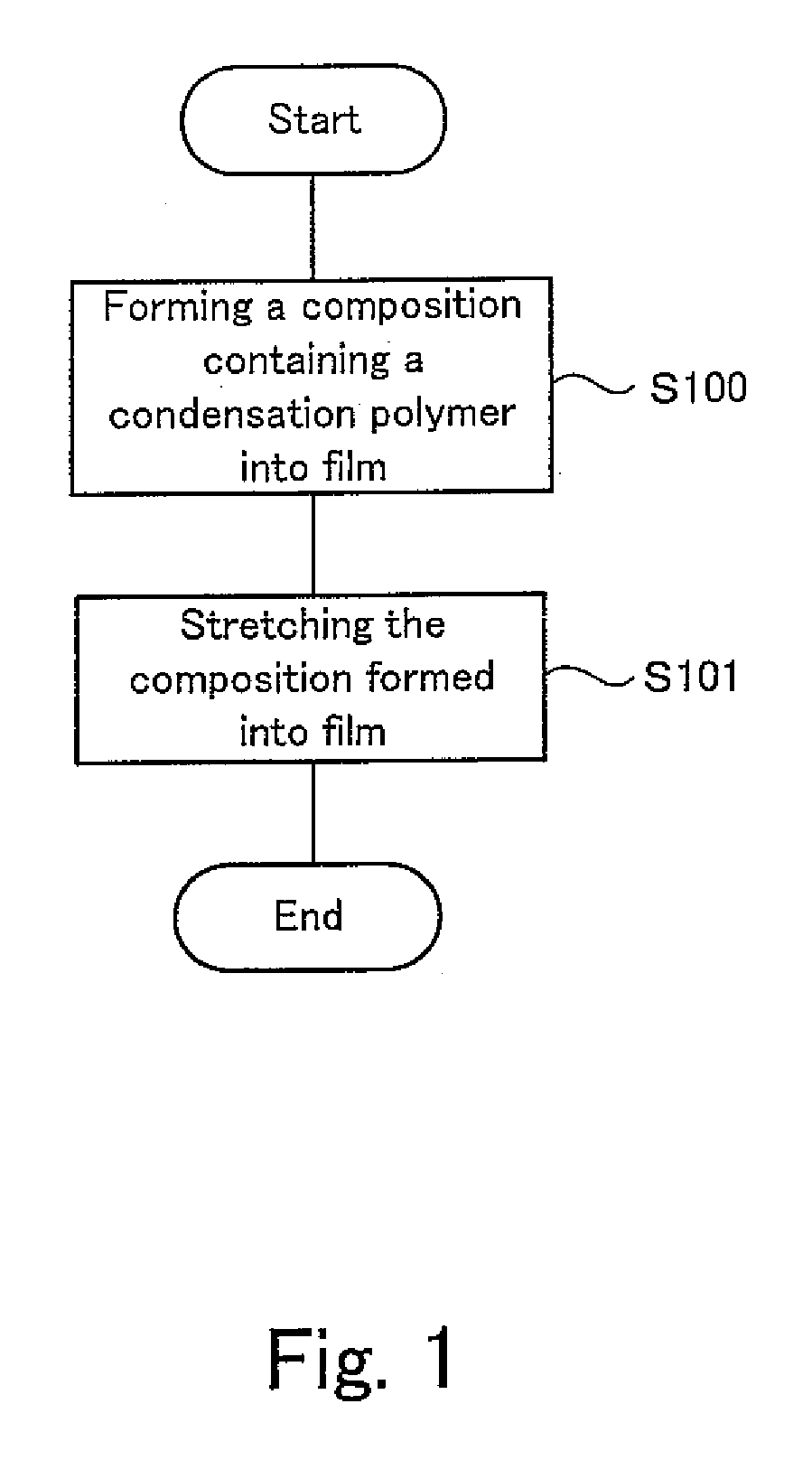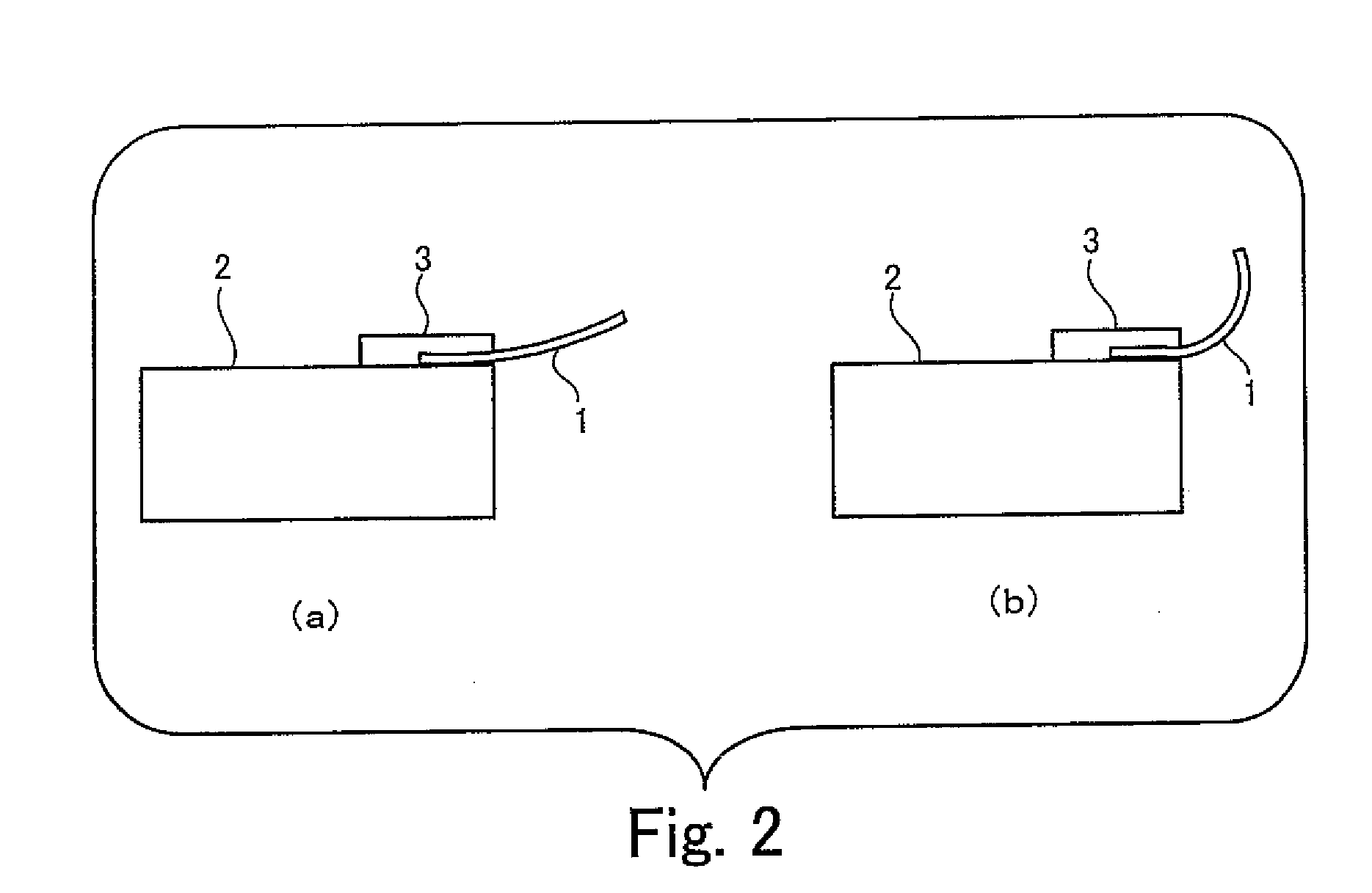Optically-driven actuator, method of manufacturing optically-driven actuator, condensation polymer and film
a technology of optical actuators and actuators, which is applied in the direction of machines/engines, other domestic objects, mechanical apparatuses, etc., can solve the problems of unfunctional gels in dry environments, low response speed, and small contraction rate, and achieves easy and simple manufacturing methods, high photoresponsiveness, and light weight
- Summary
- Abstract
- Description
- Claims
- Application Information
AI Technical Summary
Benefits of technology
Problems solved by technology
Method used
Image
Examples
example 1
Synthesis of Photoresponsive Condensation Polymer P-4
[0074]
[0075]To an aqueous solution prepared by adding 90 ml of water to 22 ml of an aqueous solution of 37% by weight of hydrochloric acid, M-1 (10.91 g, 0.100 mols) was added and cooled to 5° C. or lower. To this solution, an aqueous solution prepared by dissolving 7.59 g of sodium nitrite in 22 ml of water was added dropwise (internal temperature was 5° C. or lower). The mixed solution was stirred for 30 minutes while keeping the internal temperature at 5° C. to 10° C. The resultant solution was added dropwise to a solution of M-2 (15.02 g, 0.100 mol) in an aqueous solution of sodium hydroxide (sodium hydroxide: 16.12 g, water: 90 ml), while keeping the internal temperature at 5° C. or lower, and the mixed solution was stirred for 30 minutes. The resultant reaction product was added to an aqueous solution of 1 N hydrochloric acid (1.5 L), and the produced precipitate was filtered out and washed with an aqueous solution of sodium...
example 2
Synthesis of Photoresponsive Condensation Polymer P-9
[0077]
[0078]The mixture of M-5 (20.00 g, 0.103 mol), toluene (300 ml) and an aqueous solution of 48% by weight sodium hydroxide (300 ml) was cooled to 0° C., the salt of tetra-n-butylammonium hydrogensulfate (76.94 g, 0.227 mol) was added to the mixture, and M-6 (80.34 g) was added dropwise to the mixture while vigorously stirring the mixture. After stirring at 0° C. for 30 minutes, the mixture was warmed to room temperature and stirred for another 30 minutes. Water was added to the mixture to separate the organic layer, and the separated organic layer was washed with an aqueous solution of saturated ammonium chloride, an aqueous solution of saturated sodium hydrogencarbonate and an aqueous solution of saturated sodium chloride in this order. The washed organic layer was dried with magnesium sulfate and the solvent was distilled away. The residue thus obtained was purified by silica gel column chromatography (solvent: hexane / ethyl...
example 3
Synthesis of Photoresponsive Condensation Polymer P-15
[0080]
[0081]M-3 (8.04 g, 29.7 mmols) was dissolved in a chlorobenzene-dichlorobenzene mixed solvent (volume ratio 80:20) (100 ml). Hexamethylene isocyanate (5.00 g, 29.7 mmols) was dissolved in the same mixed solvent (50 ml) as above and about half amount of the solution was added to the M-3 solution in an atmosphere of nitrogen while heating under reflux and vigorously stirred. The rest of the solution of hexamethylene isocyanate was added dropwise over 3 to 4 hours, and after completing the addition, the resultant solution was heated under reflux for another 1 hour. The solution was then cooled to room temperature, and the produced precipitate was filtered out, washed with methanol, and dried to yield P-15 (10.3 g).
PUM
| Property | Measurement | Unit |
|---|---|---|
| Deformation enthalpy | aaaaa | aaaaa |
| Condensation enthalpy | aaaaa | aaaaa |
Abstract
Description
Claims
Application Information
 Login to View More
Login to View More - R&D
- Intellectual Property
- Life Sciences
- Materials
- Tech Scout
- Unparalleled Data Quality
- Higher Quality Content
- 60% Fewer Hallucinations
Browse by: Latest US Patents, China's latest patents, Technical Efficacy Thesaurus, Application Domain, Technology Topic, Popular Technical Reports.
© 2025 PatSnap. All rights reserved.Legal|Privacy policy|Modern Slavery Act Transparency Statement|Sitemap|About US| Contact US: help@patsnap.com



